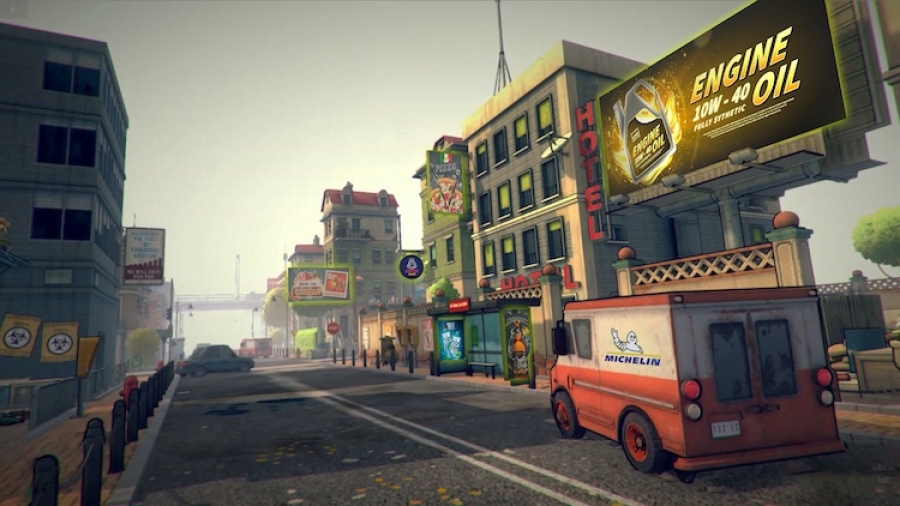The first ads started appearing in video games right at the beginning of the 1980s, just as the video game revolution got started! In the beginning, ad integrations were very basic, but in this article, we will show you how they continued to develop and how pervasive game advertising is now.
In the 1980s, game advertising was largely limited to producing simple games for the purpose of brand or product promotion. For example, in 1983, Johnson&Johnson created a game called Tooth Protector. In this game, your task was to prevent the evil snack monster from damaging your pearly whites.
Coke also started making custom games. The giant teamed with SEGA and produced a custom version of the legendary game Space Invaders. In the original title, you controlled a spaceship and had to shoot rows of attacking aliens. In Coke’s game, the aliens would approach in a formation that spelled Pepsi, and your role was to destroy Pepsi, Coke’s biggest rival.
Budweiser also couldn’t resist getting into the promotional video game trend. The top-selling American beer company created an addictive arcade-style game known as Tapper. In this game, you had to pour beers and clean up the bar by collecting empty glasses. If customers didn’t receive their beer fast enough, you lost. This game became a big hit and helped Budweiser tap into new markets.
From the early 1980s to the mid-1990s, video game advertising was mostly limited to cheap promotional games. The company advertising the product was a central part of the game’s plot and gameplay. These brands were also heavily involved in the creation of these promotional games. During this period, there were little to no integrated ads, but that would soon change as the video game industry became more advanced and new technologies allowed different kinds of creative advertising to emerge.
In the Late 90s and Early 2000s Game Advertising Became More Interesting
Crazy Taxi was a pioneer in pushing game advertising to new heights. The 1999 release was one of the very first games to advertise brands without having them involved in the game's design. Crazy Taxi was also one of the first games to feature in-game advertising that occurred in the background without impacting the gameplay. The creative taxi video game was able to feature a wide range of brands at the same time.
In Crazy Taxi, you took on the tough job of driving different passengers around the city, ensuring they got to their correct destination on time and in one piece. As a taxi driver, you had to take passengers to familiar locations like fast-food restaurants such as Pizza Hut and KFC or clothes shops like Levi's. Featuring these real places not only enhanced the game experience for players but allowed Crazy Taxi's game developers to pocket some extra change from advertising these businesses.
Car racing games also saw a huge surge in-game advertising as the technology in the 90s allowed game developers to depict specific models in fine detail accurately. Due to this improvement in graphics, car manufacturers started paying game developers large amounts of money to have their cars featured in certain games. One early video game that could cash in on this trend was Need for Speed. With Need for Speed, you could cruise around in the latest Ferraris, BMWs, and Mercedes and visualize yourself one day driving these incredible cars for real.
The early 2000s saw a massive jump in video game advertising as specialized ad agencies started emerging. These agencies pushed the industry and made in-game advertising the rule rather than the exception. The rise in-game advertising coincided with the rise of online gaming, which allowed game developers to customize ads to certain audiences and use dynamic advertising, which was constantly updated just like television advertising.
2005 saw one of the first examples of dynamic advertising thanks to the creative special forces shooter game, Splinter Cell. The game featured a range of constantly updating banners and featured some massive companies, including AX, Nokia, and even AMD. The developers behind Splinter Cell, Ubisoft, sold space on these banners to different companies and different time slots and orders. Companies had to pay premium money for their ad to be shown first at primetime hours. Ubisoft was also the first developer to introduce location-based ads.
As market analysts started discovering how long young people were immersed in video games, they came up with new and creative ways to tap into this audience. It wasn't just brands that started ramping up in-game advertising but even politicians. During the 2008 US Presidential Election campaign, Barack Obama was featured heavily in the Xbox 360 game Burnout Paradise, and his ads could be constantly seen on banners. Obama's political team was hoping to mobilize millions of young video game enthusiasts to vote!
Modern Advertising in Games
From late 2008 to 2014, video game advertising did not make much progress. Brands were still mostly advertising via in-game methods, and product placement was still the number 1 method. It became expected that players would drive certain models of cars, use real tech devices, and rock designer clothing. However, things started to shift around 2015 when advertisers started coming up with new methods.
The rise of streaming platforms like Twitch allowed brands to partner with individual streamers rather than the video game companies themselves. This allowed brands to ensure their products were seen by a cross-section of video game enthusiasts rather than fans of particular games. Partnering with streamers also allowed brands to more effectively influence buyers because of the power streamers had over their loyal audiences.
Another way that video advertising is changing the brands are embracing the idea of immersive virtual worlds, also known as the metaverse. Fortnite is one of the early adopters of this concept and recently allowed advertisers to showcase movie trailers while players are watching movies in the game and even let players attend a virtual concert that was hosted by American rapper Travis Scott. This virtual concert managed to achieve almost 50 million viewers.
Currently, the in-game advertising market is estimated to be worth $200 billion, and this is only going to rise with analysts predicting close to 30% annual growth rates. So you can expect to see a lot more advertising in video games in the future!
Conclusion
It is amazing just how fast the video game industry has progressed. Games from the 1980s are now basically unplayable and resemble black and silent films. Video game advertising has also gone through a monumental shift, from basic free promotional games to being seamlessly featured in highly complex virtual worlds. The trend of video games and in-game advertising becoming more advanced and encapsulating is likely to continue for many years to come, with some experts even predicting that humans will spend most of their lives immersed in virtual games.






